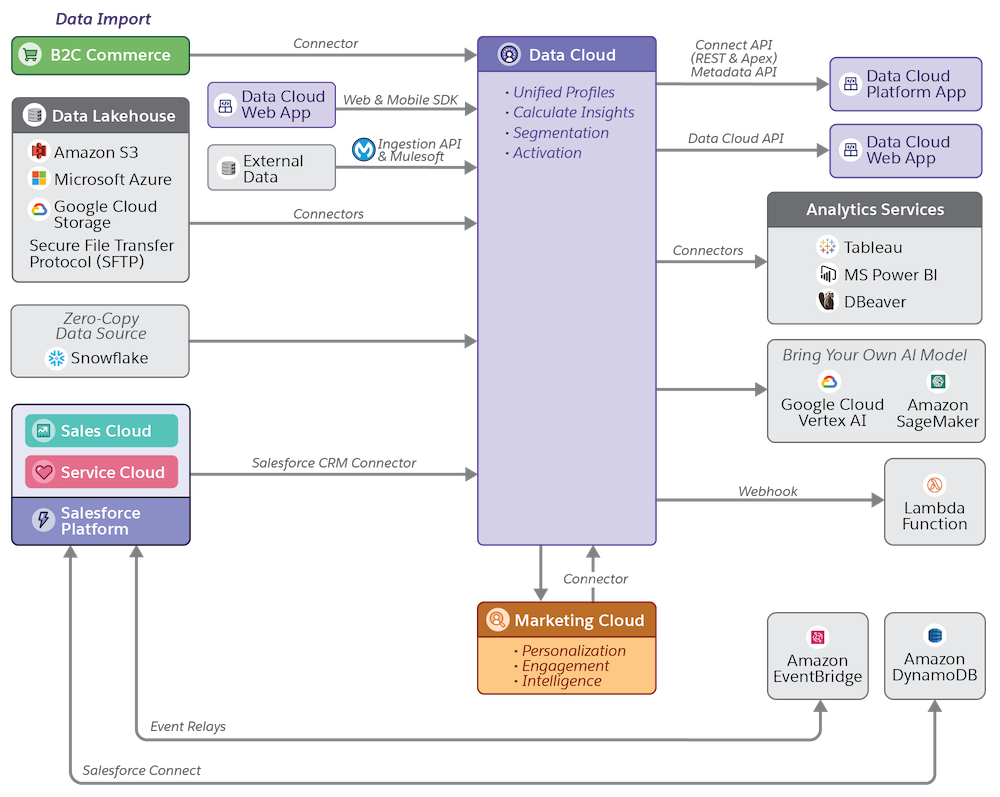Get Started with Data Cloud Development
With Data Cloud, you can consolidate and process large volumes of data from various sources and integrate it with Salesforce CRM data, avoiding data silos. Data Cloud uses a lakehouse to store your data and connect it with the Salesforce Platform. You can process data at scale, query the data, and create insights from billions of records. Customer data is unified so that you can create rich insights for customer profiles.
This diagram provides an overview of the Data Cloud architecture. It shows the integration points of Data Cloud for data ingestion and external integrations that access unified data and insights.

Here’s what the diagram covers in detail.
- Data ingested into Data Cloud via connectors, which include Salesforce CRM, B2C Commerce, and Marketing Cloud, web and mobile marketing data captured via SDKs, Ingestion API, Mulesoft Anypoint Connector, and connectors to cloud data services such as Amazon S3, Microsoft Azure, and Google Cloud Storage.
- The integration with Snowflake, which enables reading data without copying it to Data Cloud.
- Platform apps that access data in Data Cloud using Connect API via REST or Apex, and access metadata via Metadata API.
- Web apps that don’t use Salesforce Platform features access data in Data Cloud using the Data Cloud API. Unlike the Connect API, the Data Cloud API uses a tenant-specific endpoint in Hyperforce.
- Connectors to analytics services, such as Tableau, that you use to view and report on the data and insights.
- A webhook connects Data Cloud to external cloud services, such as Amazon Web Services (AWS) and Google Cloud, that can consume the unified data and insights. Through AWS, Data Cloud integrates back to the Platform via Platform features, such as Salesforce Connect and Event Relays. Also, you can bring your own AI model to Data Cloud with Amazon Sagemaker or Google Cloud Vertex AI.
See Also
- Data Cloud Reference Guide
- Data Cloud Connect REST API
- Salesforce Help: Data Cloud Features
- MuleSoft Documentation: Data Cloud Connector
- Microsoft Azure
- Google Cloud Storage
- Salesforce Help: Salesforce Connect
- Salesforce Help: Event Relay
- AWS Documentation
- Google Cloud documentation: Vertex AI
- Salesforce Developer’s Blog: Bring Your Own AI Models to Data Cloud
- Salesforce Developer’s Blog: Bring Your Google Vertex AI Models to Data Cloud